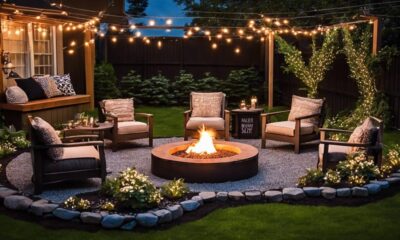Mardi Gras Decoration
What Does Purple and Green Symbolize?
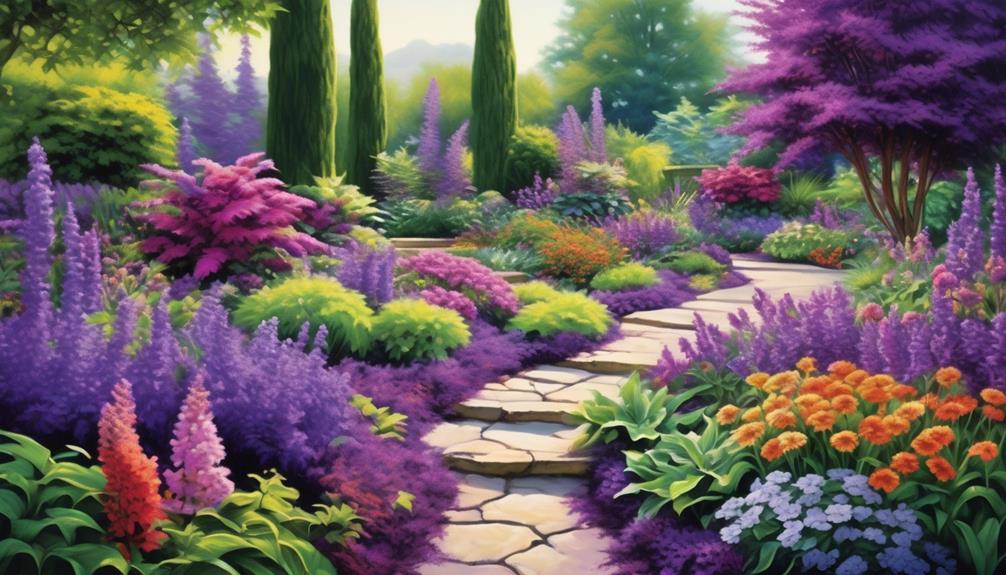
We frequently overlook the significance of colors in our everyday lives. Have you ever stopped to consider what the colors purple and green represent? These two shades have a diverse history and convey different meanings in various cultures, traditions, and situations.
Understanding their significance can provide fascinating insights into art, psychology, spirituality, and even personal identity. So, let's uncover the layers of symbolism behind purple and green, and explore the profound impact they have on our perceptions and experiences.
Key Takeaways
- Purple symbolizes wealth, power, and prestige, and has a deep association with royalty and nobility.
- Purple is linked to spirituality, enlightenment, and inner peace, and represents wisdom, creativity, and dignity.
- Green symbolizes environmental harmony and renewal, reflects the rejuvenation of life, and encourages growth and personal transformation.
- The combination of purple and green creates a visually striking contrast that conveys unity and balance, and is used in art, fashion, and branding to evoke emotions and psychological responses.
Historical Significance of Purple
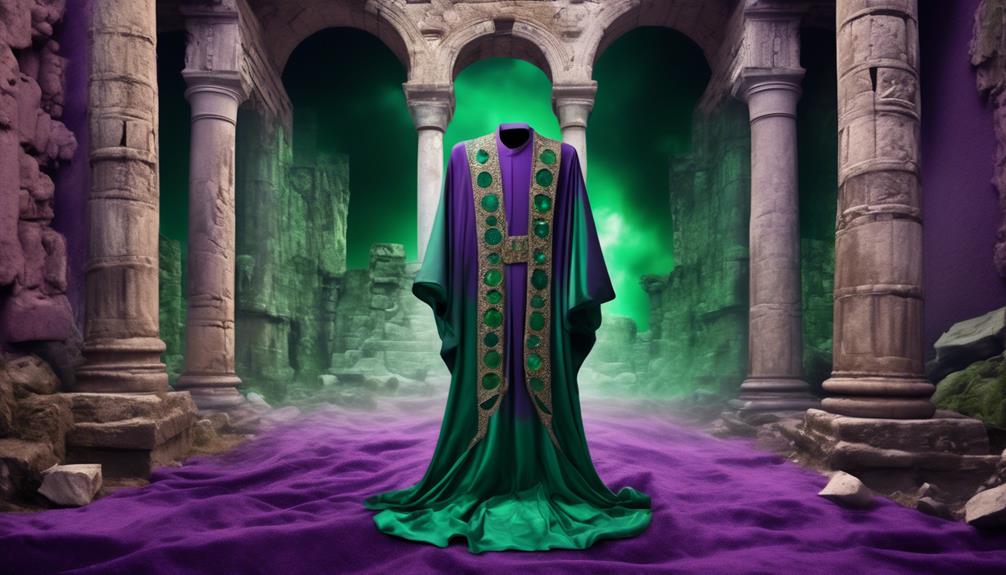
Throughout history, the color purple has been revered for its association with royalty, spirituality, and creativity. Its historical significance dates back to ancient civilizations, where the dye for purple fabric was so rare and expensive that it became a symbol of wealth and power. In fact, in some cultures, laws were even established to regulate who could wear purple clothing, reserving it exclusively for royalty and the elite. This cultural significance reinforced the perception of purple as a color of prestige and honor.
Furthermore, purple has been deeply intertwined with spirituality and creativity. In various religious and mystical traditions, purple is associated with spiritual enlightenment, wisdom, and inner peace. It's often used in sacred spaces and rituals to evoke a sense of divine connection and introspection.
Additionally, in the realm of creativity, purple is linked to imagination, artistic expression, and originality. Its ability to stimulate the imagination and inspire unconventional thinking has made it a favored color among artists and innovators throughout history.
Royal Associations With Purple
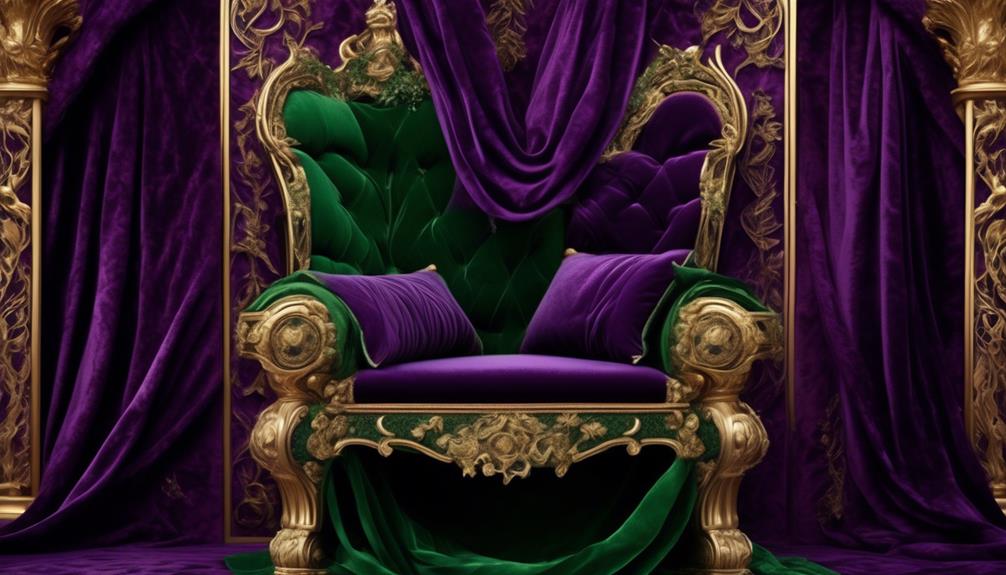
Purple has long been associated with royalty, symbolizing power and prestige. Throughout history, purple has been reserved for the elite and those in positions of authority, representing regal dignity and grandeur.
The color's rich and luxurious hue has been a symbol of wealth and status, making it a fitting choice for royal attire and decor.
Regal History of Purple
Through the ages, the color purple has held a position of prestige and power, evoking a sense of royalty and regality.
In royal fashion, purple was historically significant because it was a rare and expensive dye to produce, making it a symbol of wealth and status. The association of purple with royalty dates back to ancient times when it was reserved for the noble and ruling classes.
This historical significance has deeply embedded the color purple in our psyche as a representation of luxury, sophistication, and authority. Its regal history has influenced how we perceive the color, associating it with qualities such as wisdom, creativity, and dignity.
Understanding the regal history of purple provides insight into the profound impact of color symbolism on our perceptions and emotions, enriching our appreciation for its symbolic significance.
Prestige and Power Symbolism
In the realm of symbolism and psychology, purple's rich associations with prestige and power stem from its historical ties to royalty and nobility.
The color purple has long been linked to social and cultural connotations of prestige and power, primarily due to its scarcity and the expense of producing purple dyes in ancient times. The rarity of purple dyes meant that only the wealthy and powerful could afford clothing and items in these hues, establishing a strong association between purple and nobility.
Throughout history, purple has been used to symbolize the elevated status of monarchs and leaders, further solidifying its link to prestige and power.
This enduring symbolism continues to shape our perceptions of purple, imbuing it with an air of authority and sophistication.
Spiritual and Mystical Meaning of Purple
As we explore the spiritual and mystical meaning of purple, we uncover its profound significance in symbolism, psychology, and color theory.
Purple holds a deep spiritual significance across various cultures and belief systems, symbolizing spiritual enlightenment, inner wisdom, and higher consciousness. In psychology, purple is associated with creativity, imagination, and the integration of the physical and spiritual realms. Color theory recognizes purple as a harmonious blend of stimulating red and calming blue, representing a balance between the physical and spiritual aspects of life.
- Symbolism of Royalty: Purple has long been associated with royalty, representing power, luxury, and divine wisdom.
- Connection to Spirituality: The color purple is often linked to the crown chakra, signifying spiritual awakening, enlightenment, and the pursuit of higher knowledge.
- Mystical Symbolism: In mystical traditions, purple is seen as a bridge between the earthly and spiritual realms, fostering a deep sense of introspection and self-discovery.
- Healing and Transformation: Purple is believed to facilitate emotional healing, transformation, and the release of negative patterns, promoting a sense of inner peace and spiritual growth.
Understanding the spiritual and mystical aspects of purple allows us to appreciate its profound influence on our inner world and spiritual journey.
Psychological Impact of Purple
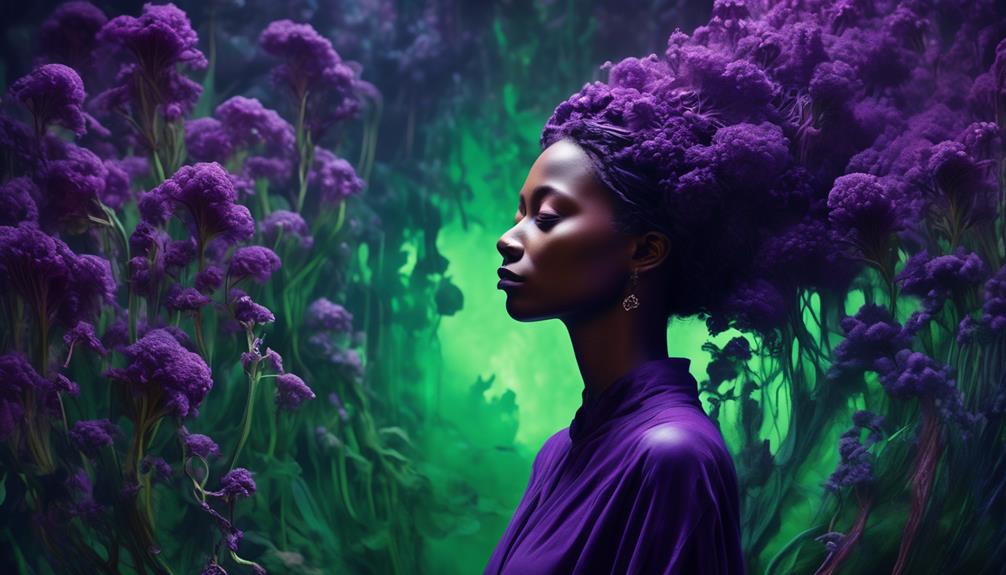
Purple has long been associated with spirituality, royalty, and magic, evoking a sense of mystery and creativity. Its calming effect on the mind and its ability to encourage deep contemplation make it a color that has a profound psychological impact.
The spiritual associations of purple also play a role in its psychological effects, influencing our emotions and mental state in unique ways.
Purple's Calming Effect
The soothing and tranquil nature of the color purple has been widely recognized in the realms of symbolism, psychology, and color theory, eliciting a sense of calm and introspection in individuals.
- Associations with Spirituality: Purple has long been associated with spirituality and mindfulness, making it a popular choice for creating a calming atmosphere in meditation spaces and yoga studios.
- Trend in Interior Design: Interior design trends have embraced the calming effect of purple, with many modern homes incorporating shades of lavender and lilac to promote relaxation and mental clarity.
- Therapeutic Impact: In psychology, the color purple is often used in therapeutic settings to promote a sense of tranquility and encourage introspection during counseling sessions.
- Symbolism of Peace: Purple's association with peace and serenity makes it a valuable tool for creating peaceful and welcoming environments, particularly in spaces dedicated to serving others.
Purple's Spiritual Associations
With its profound influence on tranquility and introspection, the color purple's spiritual associations delve deep into the psychological impact it has on individuals.
Purple is often linked to spiritual enlightenment and inner wisdom. In color therapy, purple is believed to balance the mind and spirit, promoting a sense of peace and spiritual awareness. It encourages introspection and contemplation, allowing individuals to connect with their inner selves and higher consciousness.
The color's association with spirituality makes it a powerful tool for those seeking to enhance their spiritual practices or engage in meditation and mindfulness. Its deep connection to the psyche and spiritual realms makes purple a valuable resource for individuals on a journey towards self-discovery and inner peace.
Environmental Symbolism of Green
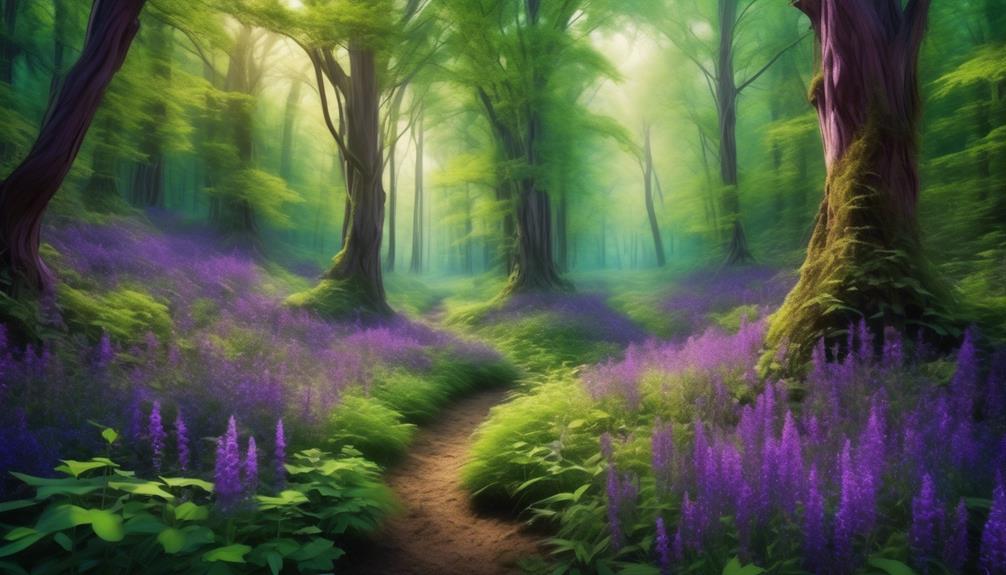
Green, with its association with nature and growth, symbolizes environmental harmony and renewal. It represents a deep connection to the Earth and carries significant environmental symbolism. The color green is closely linked to concepts of environmental awareness and sustainability, promoting a sense of responsibility towards our planet and its resources.
Here's why green is so meaningful in environmental symbolism:
- Eco-friendly Practices: Green symbolizes eco-friendly practices and encourages the use of sustainable resources, promoting a healthier planet for future generations.
- Natural Symbolism: The color green embodies the natural world and the importance of preserving and protecting our environment, fostering a sense of respect and stewardship for the Earth.
- Renewable Energy: Green represents the movement towards renewable energy sources and sustainable living, highlighting the need to reduce our ecological footprint.
- Harmonious Balance: Green signifies the harmonious balance between humanity and nature, emphasizing the interconnectedness of all living things and the importance of preserving biodiversity.
Understanding the environmental symbolism of green allows us to appreciate the significance of sustainable living and encourages us to make choices that benefit both the planet and its inhabitants.
Growth and Renewal Represented by Green
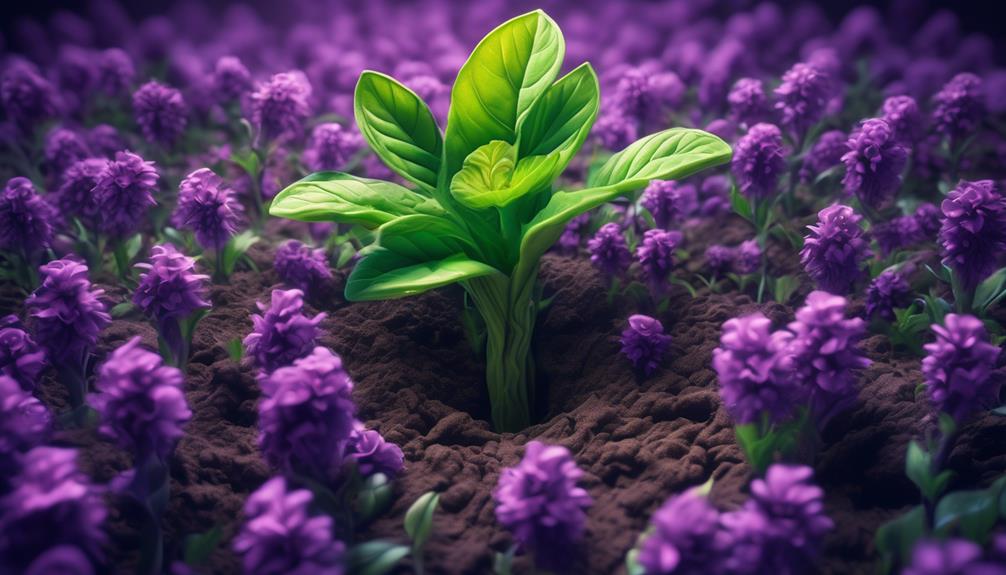
Having explored the environmental symbolism of green and its connection to sustainability and eco-friendly practices, we can now delve into its representation of growth and renewal in various contexts. In garden symbolism, green embodies the essence of environmental growth, signifying the flourishing of life and the cycle of renewal. The vibrant hue reflects the rejuvenation of nature, evoking a sense of vitality and abundance.
On a personal level, green symbolizes renewal and emotional growth. It speaks to the rejuvenation of the spirit, offering a sense of hope and optimism. Just as plants grow and renew themselves, green encourages individuals to embrace personal growth and transformation. It represents the opportunity for new beginnings and the revitalization of one's inner being.
Green's association with growth and renewal extends beyond the physical and emotional realms, permeating into the psychological and spiritual dimensions. It serves as a reminder of the resilience and adaptability inherent in all living things, encouraging us to embrace change and embark on a journey of continuous renewal.
In essence, the color green symbolizes the perpetual cycle of growth and renewal, offering a source of inspiration and encouragement for both the natural world and the human spirit.
Balance and Harmony in Green
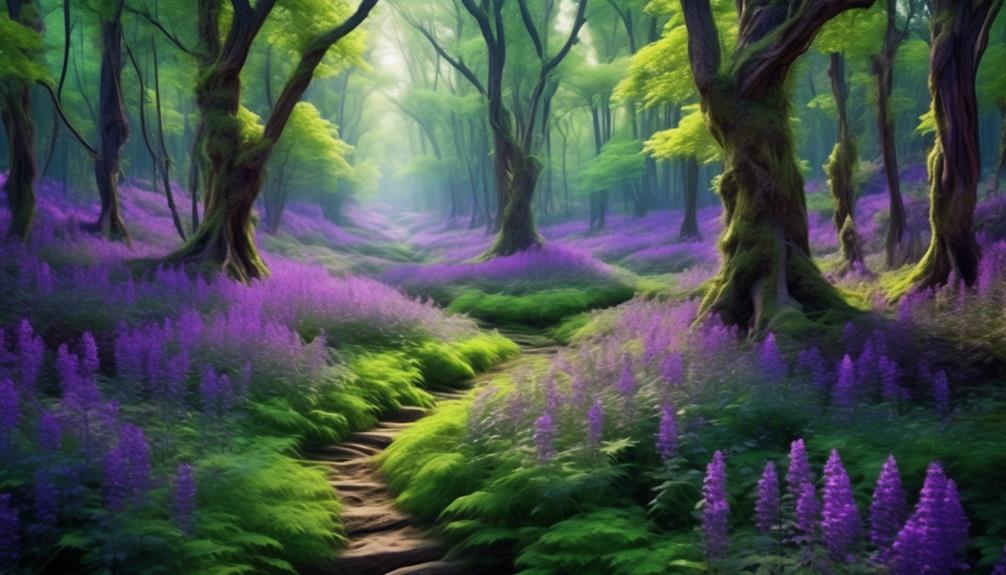
In the realm of symbolism, green exemplifies a harmonious balance between growth and stability, embodying the interplay of renewal and endurance within the natural world and the human psyche. This balance and tranquility found in green symbolizes the natural healing properties that it offers to our minds and bodies.
Here are some aspects to consider:
- Environmental Equilibrium: Green represents the delicate equilibrium found in nature, where growth and decay coexist in a harmonious cycle.
- Psychological Balance: The color green has a calming effect on the mind, promoting a sense of balance and tranquility, and aiding in reducing anxiety and stress.
- Physical Healing: It's often associated with the body's natural healing processes, promoting overall wellness and rejuvenation.
- Emotional Stability: Green is linked to emotional stability and harmony, fostering a sense of balance and well-being within oneself and in relationships.
Understanding the symbolism of green as a representation of balance and harmony can offer insights into how we can create equilibrium in our lives and serve others in achieving a sense of peace and wellness.
Cultural and Regional Symbolism of Green
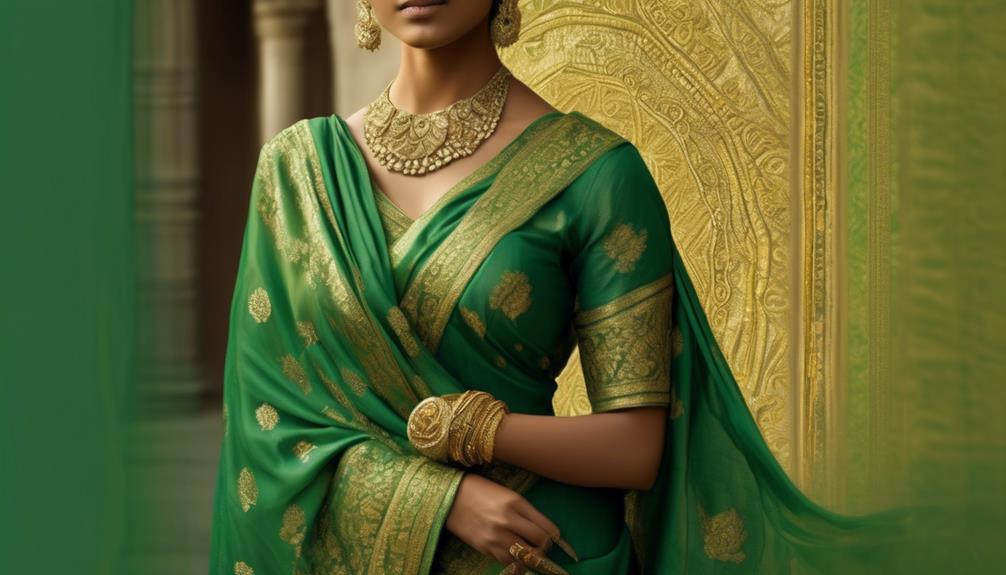
Green holds a significant place in various cultures and regions, often representing different ideas and concepts. From the lush green landscapes of Ireland to the symbolic use of green in Islamic art, the color holds diverse meanings.
We can explore how green is deeply intertwined with cultural traditions, religious beliefs, and historical contexts, shedding light on the rich tapestry of symbolism associated with this vibrant hue.
Green in Nature
Amidst the lush foliage of many cultures and regions, the color green is revered for its association with growth, renewal, and harmony in nature. This color holds deep cultural and psychological significance, representing the following:
- Green Landscapes: The color green in nature symbolizes lush landscapes, representing fertility, abundance, and prosperity.
- Environmental Impact: It signifies the importance of environmental conservation, sustainability, and living in harmony with the earth.
- Psychological Healing: Green in nature has a calming effect, promoting balance and well-being, and is often used in therapy and healing environments.
- Renewal and Growth: It embodies the cycle of life, representing new beginnings, growth, and the promise of a fresh start.
The color green in nature encompasses a profound symbolism that resonates deeply within many cultures and regions, emphasizing the interconnectedness of humanity and the environment.
Green in Symbolism
Deeply rooted in cultural and regional symbolism, the color green holds a significant place in the collective consciousness, symbolizing various aspects of life and nature.
In many cultures, green represents environmental conservation, reflecting the importance of preserving and protecting our natural world. It embodies the harmony between humanity and nature, emphasizing the need to care for our planet.
Green also holds significance in symbolizing natural healing, portraying the rejuvenating and regenerative powers of the earth. It represents a sense of balance and renewal, offering hope and restoration.
This symbolism of green reinforces the idea of serving others by promoting a sustainable and nurturing environment.
Understanding the cultural and regional symbolism of green allows us to appreciate its deeper significance and encourages us to embrace a holistic approach to caring for our planet and each other.
Purple and Green in Art and Design
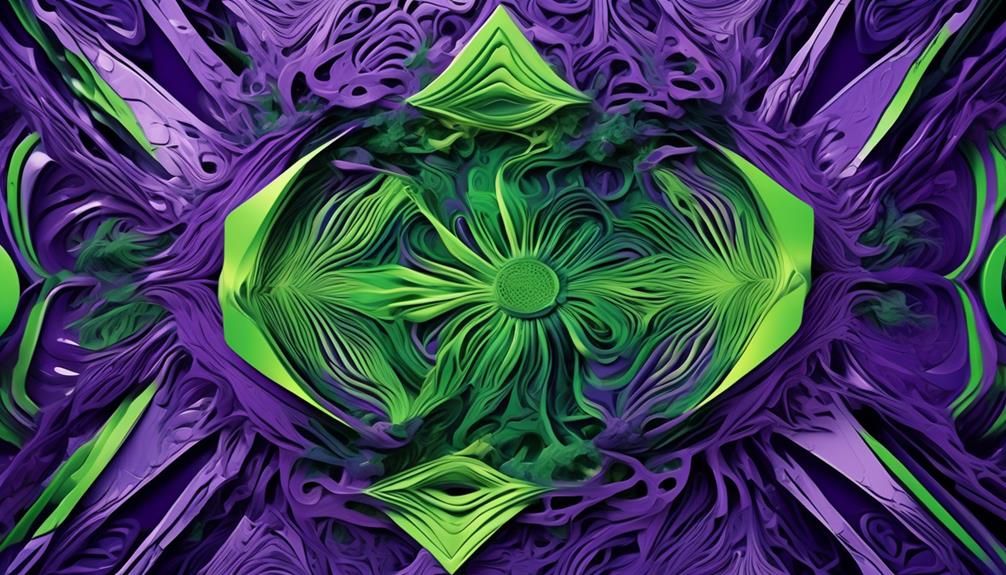
Incorporating purple and green into art and design adds depth and complexity, evoking a sense of mystery and harmony through the interplay of these symbolic colors. These hues hold significant meaning and elicit powerful emotional responses, making them valuable tools in artistic expression and design.
- Color psychology: Purple is often associated with creativity, wisdom, and spirituality, while green symbolizes growth, renewal, and balance. When combined, they create a dynamic visual experience that can evoke a wide range of emotions and psychological responses.
- Harmonious contrast: The juxtaposition of purple and green in art and design creates a visually striking contrast that captivates the viewer's attention. This harmonious interplay can convey a sense of unity and balance, enhancing the overall impact of the artistic piece.
- Symbolic storytelling: Artists often use these colors to convey narratives and symbolism within their work. The combination of purple and green can communicate themes of transformation, abundance, and the interconnectedness of the natural and spiritual worlds.
- Aesthetic appeal: The rich and regal undertones of purple, when paired with the soothing and refreshing qualities of green, create a visually captivating aesthetic that can elevate the overall design and evoke a sense of enchantment and allure.
Impact of Purple and Green in Fashion
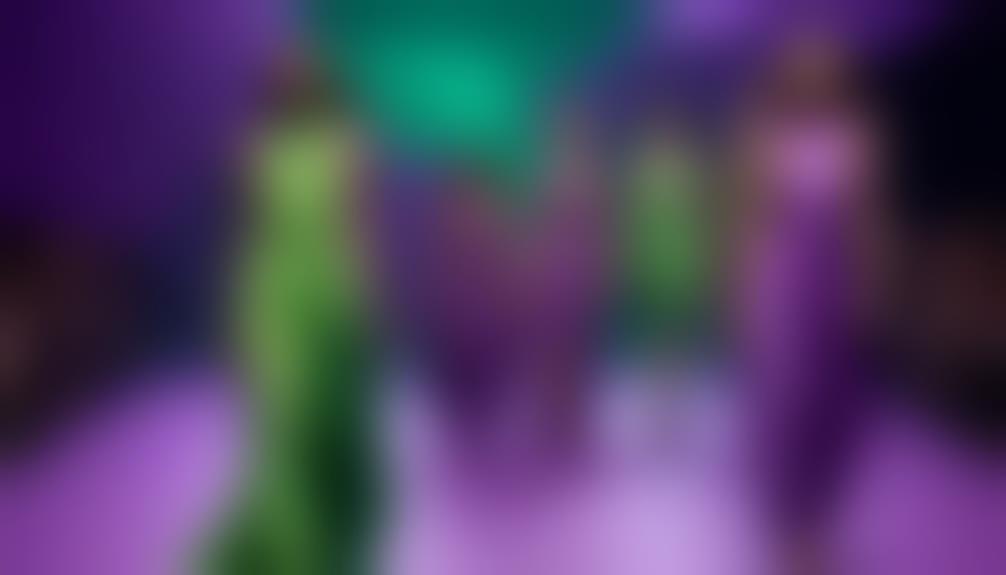
The interplay of purple and green in art and design, with their rich symbolism and psychological impact, extends its influence into the realm of fashion, shaping trends and evoking powerful emotions. In the world of fashion, the combination of purple and green has been making waves, reflecting the evolving trends and the intricate workings of color psychology.
| Fashion Trends | Color Psychology |
|---|---|
| Purple and green are increasingly seen in fashion runways, showcasing a blend of luxury and harmony. | Purple, associated with creativity and luxury, combined with green, symbolizing nature and balance, creates a powerful visual impact. |
| Earthy tones of green paired with regal shades of purple are becoming popular in casual wear, reflecting a desire for both sophistication and tranquility. | This combination evokes a sense of balance, growth, and abundance, appealing to those seeking harmony and renewal in their lives. |
| The use of purple and green in activewear is on the rise, representing a fusion of spirituality and vitality. | Purple stimulates imagination and spirituality, while green promotes a sense of renewal and energy, making it an ideal choice for activewear. |
| Haute couture designers are incorporating purple and green to create bold and daring statements, infusing their collections with a sense of opulence and natural beauty. | This bold pairing conveys a message of opulence and renewal, appealing to those who seek to make a strong and sophisticated fashion statement. |
| Streetwear brands are embracing the fusion of purple and green, reflecting a blend of urban culture and natural elements. | The combination mirrors the duality of urban life and nature, offering a sense of balance and vitality to those seeking self-expression in their fashion choices. |
The impact of purple and green in fashion is not just about aesthetics; it's a reflection of the evolving human psyche and the desire for balance, growth, and renewal in an ever-changing world.
Symbolism of Purple and Green in Branding
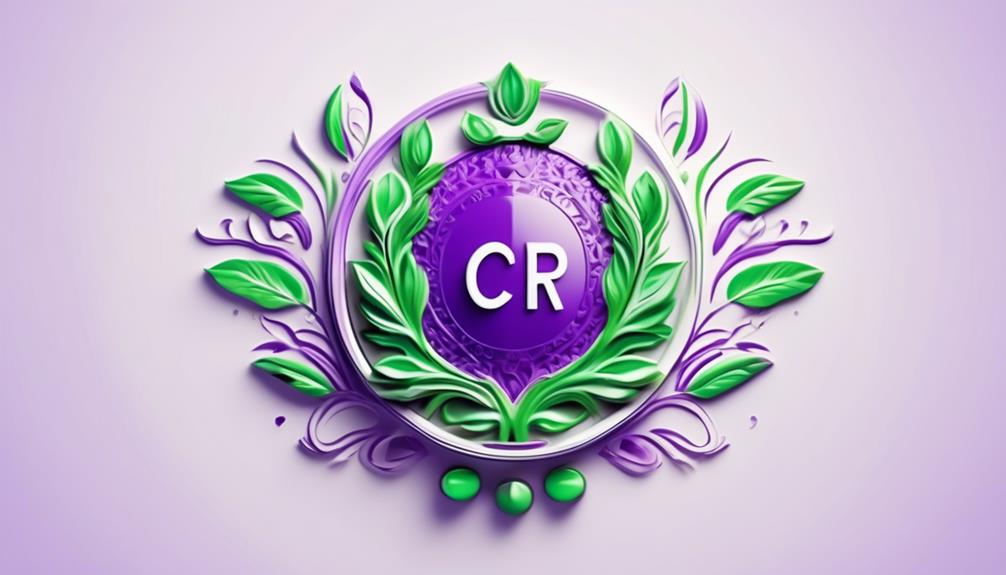
In branding, the symbolism of purple and green evokes a sense of balance, creativity, and natural harmony, influencing consumer perceptions and emotional connections.
- Color psychology: Purple is often associated with luxury, sophistication, and creativity, while green symbolizes growth, freshness, and harmony. The combination of these colors in branding can convey a message of innovation and environmental consciousness.
- Marketing impact: Purple and green can be strategically used to create a unique brand identity and stand out in a crowded market. These colors can help communicate a brand's values and personality, influencing consumer behavior and purchase decisions.
- Brand identity: When used in branding, purple and green can evoke a sense of trust, quality, and environmental awareness. This can help in building a strong brand identity that resonates with the target audience and fosters long-term loyalty.
- Color symbolism: Purple and green can symbolize a brand's commitment to creativity, sustainability, and holistic well-being. This can create a positive association in the minds of consumers, ultimately contributing to brand success and market positioning.
Personal and Emotional Associations With Purple and Green
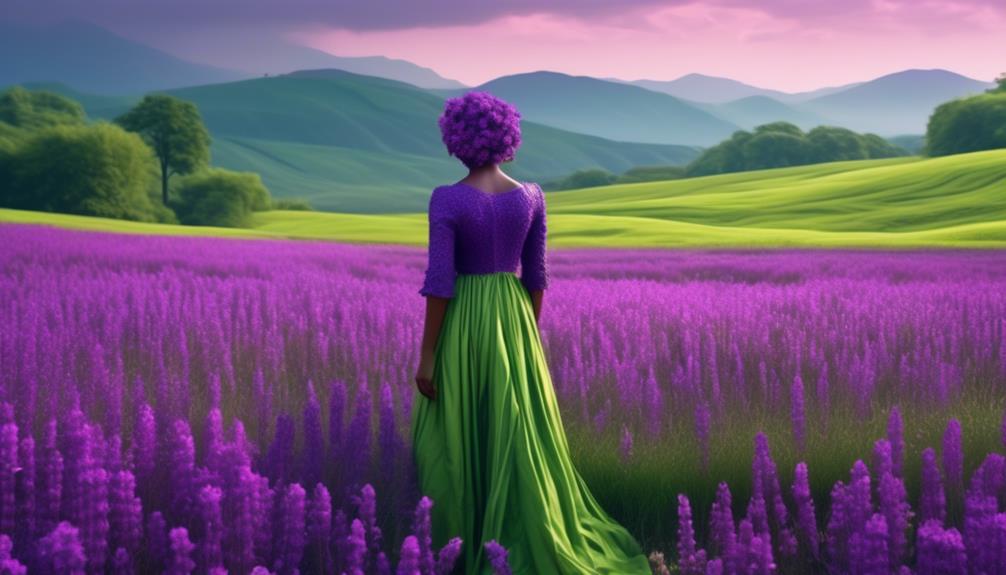
When considering personal and emotional associations with purple and green, individuals often find themselves drawn to these colors due to their profound impact on mood and mindset. Purple is often associated with creativity, imagination, and spirituality. It can evoke a sense of mystery and luxury, allowing for personal expression and introspection.
On the other hand, green is linked to nature, growth, and harmony. It can have a calming and balancing effect, promoting emotional connections and a sense of renewal.
In color psychology, purple is often seen as a color that encourages individual interpretation and deep emotional connections. It can be a powerful tool for expressing oneself and tapping into one's inner thoughts and feelings. Green, on the other hand, is known for its ability to restore balance and create a sense of stability. It can help individuals feel grounded and connected to the world around them.
For many, the combination of purple and green represents a harmonious blend of personal expression and emotional well-being. These colors can serve as a reminder to embrace creativity, nurture inner growth, and seek balance in our lives.
Frequently Asked Questions
What Are Some Common Myths or Folklore Surrounding the Color Purple and Green?
Common myths and folklore surrounding the colors purple and green often stem from ancient cultural beliefs.
Mythical stories depict purple as a symbol of royalty and power, while green is associated with growth and renewal.
In folklore, purple is linked to spirituality and mysticism, while green represents nature and balance.
Color psychology suggests that purple evokes creativity and luxury, while green brings a sense of harmony and vitality.
These energy impacts have shaped our perceptions of these hues for generations.
How Do Purple and Green Colors Impact the Human Body's Energy and Chakras According to Spiritual Beliefs?
When it comes to the impact of colors on chakras and energy according to spiritual beliefs, purple and green play significant roles.
Purple is associated with the crown chakra, connecting us to higher consciousness, while green is linked to the heart chakra, representing balance and harmony.
These colors are believed to influence our energy flow and can enhance our spiritual well-being. Understanding their impact on the human body can lead to a deeper connection with our inner selves.
Are There Any Specific Cultural Traditions or Rituals That Involve the Use of Purple and Green Colors?
In fashion, purple and green are often used to represent luxury and nature, respectively. Home decor also incorporates these colors to evoke feelings of opulence and tranquility.
Culturally, purple has been associated with royalty and spirituality, while green symbolizes growth and renewal in many traditions. These colors are often used in rituals and ceremonies to convey messages of prosperity and balance.
What Are the Historical Origins of Using Purple and Green as Symbols of Environmental Conservation and Sustainability?
Historical origins of using purple and green as symbols of environmental conservation and sustainability date back centuries. They represent harmony with nature, growth, and balance.
Purple embodies creativity and wisdom, while green symbolizes renewal and prosperity. Their combination evokes a deep connection to the environment and the need for its preservation.
Understanding their significance can inspire us to protect our planet for future generations.
Can the Combination of Purple and Green Colors in Art and Design Evoke Specific Emotions or Messages That Are Not Commonly Known?
Oh, the combination of purple and green in art and design is like a burst of creativity! Color psychology tells us that purple symbolizes luxury and creativity, while green evokes feelings of growth and harmony.
Together, they create a visually impactful mix that can convey a sense of balance, innovation, and environmental awareness. Artists often use this duo to express a connection between nature and human imagination, delivering a powerful message of sustainability and artistic expression.
Conclusion
In conclusion, the symbolism of purple and green runs deep, encompassing historical, spiritual, and psychological meanings. These colors evoke a sense of royalty, spirituality, and nature, and have a powerful impact on art, design, and fashion.
Whether it's the regal allure of purple or the refreshing qualities of green, these colors hold a special place in our personal and emotional associations. Like a brush painting the canvas of our minds, purple and green leave a lasting impression on our perceptions.
- About the Author
- Latest Posts
Introducing Ron, the home decor aficionado at ByRetreat, whose passion for creating beautiful and inviting spaces is at the heart of his work. With his deep knowledge of home decor and his innate sense of style, Ron brings a wealth of expertise and a keen eye for detail to the ByRetreat team.
Ron’s love for home decor goes beyond aesthetics; he understands that our surroundings play a significant role in our overall well-being and productivity. With this in mind, Ron is dedicated to transforming remote workspaces into havens of comfort, functionality, and beauty.
Mardi Gras Decoration
Mardi Gras Decor Ideas: Bringing New Orleans Flair to Your Home
Get inspired with vibrant Mardi Gras decor ideas to transform your home into a festive New Orleans celebration that your guests won’t forget!
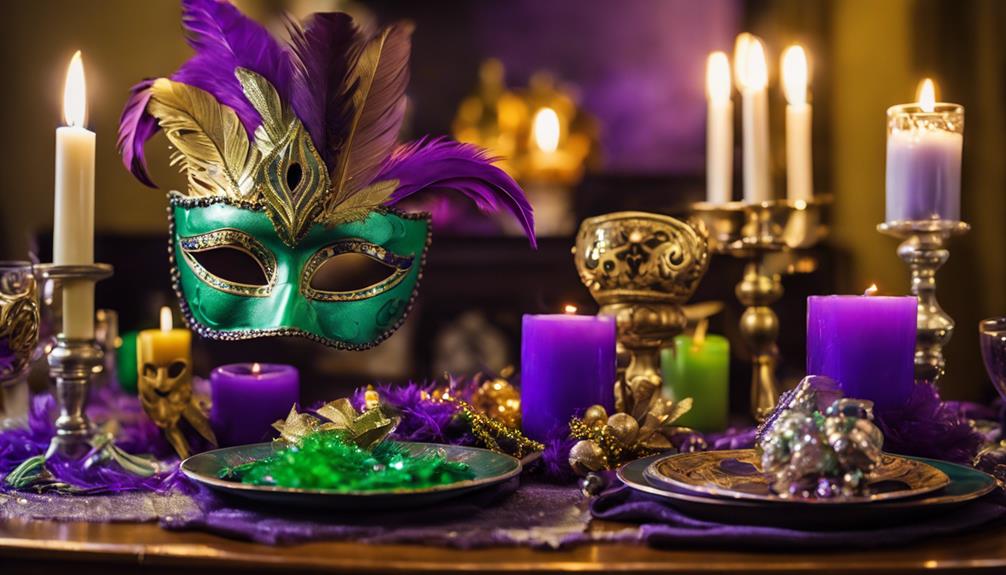
To bring the vibrant flair of New Orleans Mardi Gras into your home, embrace bold colors like purple, green, and gold. Add festive elements like masks, beads, and king cake to create an authentic atmosphere. Use a crisp white tablecloth to highlight colorful dishes and DIY decorations, like painted glassware or custom banners. Engage your guests with a themed coffee bar and vibrant centerpieces. Don't forget to design your space for conversation and fun. With these ideas, your Mardi Gras celebration will be unforgettable. Explore more creative tips to enhance your festive ambiance further!
Key Takeaways
- Embrace bold colors like purple, green, and gold to capture the essence of Mardi Gras and create a festive atmosphere.
- Incorporate traditional elements such as masks, beads, and king cake to enhance authenticity and celebrate New Orleans culture.
- Use a crisp white tablecloth as a backdrop to make vibrant decorations pop for an eye-catching table setting.
- Engage in DIY projects, like painting glassware and creating bead curtains, to add a personal touch to your decor.
Celebrate With Bold Colors
To truly celebrate Mardi Gras, you should embrace bold colors like purple, green, and gold, which capture the essence of this vibrant festival.
These bright colors not only symbolize justice, faith, and power, but they also bring an energetic flair to your home. Start with simple decorating ideas that incorporate these hues in your interior design. You might love to see table settings adorned with vibrant napkins and centerpieces that reflect the spirit of Mardi Gras.
Consider DIY projects that are budget friendly, like painting glassware in these festive colors or creating custom banners.
Adding colorful masks and beads as decorative accents can also enhance the festive theme, evoking the excitement of Mardi Gras parades right in your living space.
Don't overlook the power of floral arrangements; choose seasonal blooms in bold hues to serve as focal points in your home.
With these decorating ideas, you'll create a lively atmosphere that truly celebrates the spirit of Mardi Gras, inviting friends and family to join in the fun.
Essential Mardi Gras Elements

What essential elements should you include to create an authentic Mardi Gras celebration?
Start with a crisp white tablecloth as your base to enhance the vibrant colors of your decor. Incorporate classic Mardi Gras elements like king cake, masks, and beads, which capture the spirit of this festive occasion. Use simple white dishes for versatility and consider personalizing them with DIY plate decorations using glass paint markers.
To elevate your dining experience, add vintage candleholders and colorful drip candles, creating a warm and inviting ambiance. Gold napkins paired with Mardi Gras beads as decorative napkin rings will bring a touch of elegance to your table setting.
Don't forget about the festive beverages! Serve kids Abita Root Beer while adults can enjoy traditional offerings like Café Du Monde coffee and beignets.
These essential components won't only enhance the overall look of your Mardi Gras celebration but also immerse your guests in the rich cultural heritage of New Orleans. By including these elements, you'll create a lively atmosphere that captures the joy and excitement of Mardi Gras.
DIY Decor Projects

Enhancing your Mardi Gras celebration can be as simple as incorporating fun DIY decor projects that reflect the festive spirit of the occasion. These projects not only add a vibrant touch to your home but also create a warm and inviting atmosphere for your guests.
Here are some easy DIY decor ideas to get you started:
- Festive Bead Curtains: Create a curtain using strands of beads from Dollar Tree for just $3. This eye-catching display works great for entryways or windows.
- Themed Coffee Bar Sign: Paint a six-inch canvas with fun designs and add voodoo doll stitches for a unique sign that brings a playful touch to your coffee bar.
Tips for Hosting Parties
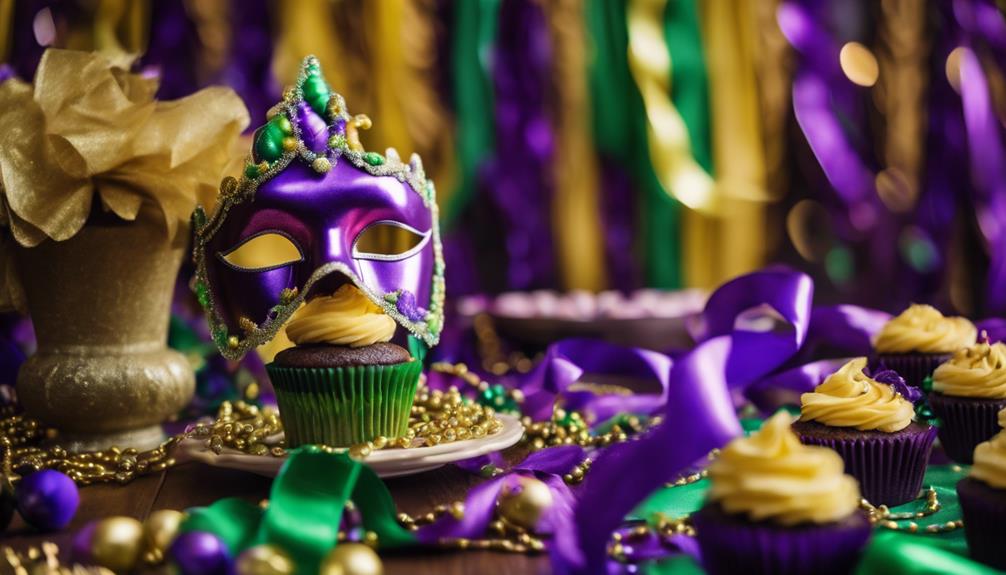
Hosting a memorable Mardi Gras party starts with a thoughtful layout that encourages conversation and keeps guests engaged. Assess your space and arrange furniture to create a welcoming atmosphere. Consider how guests will flow through the area, ensuring accessibility while mingling.
Use bold colors and festive decorations, like masks and beads, to enhance the celebratory spirit of your gathering. Think about incorporating multifunctional spaces—set up areas for dining, socializing, and entertainment. This allows guests to enjoy varied activities throughout the party.
To achieve cohesive decor, utilize themed elements such as a king cake centerpiece and vintage candleholders adorned with colorful candles. These details tie the room together and create a festive vibe.
As you're hosting parties, take note of how guests interact with your space. This can reveal areas for improvement, helping you make adjustments for future gatherings.
Incorporating Personal Style

Personalizing your Mardi Gras decor not only reflects your unique style but also makes your celebration feel more intimate and special. By showcasing unique treasures, like heirlooms and colorful pieces, you can weave your history into the festivities. Embrace bold colors—purple, green, and gold—to create lively spaces that resonate with your love for the holiday.
Here are some ideas to incorporate your personal taste:
- Use simple white dishes as a versatile base, allowing you to customize with themed elements like masks and beads.
- Engage in DIY projects such as painting personalized plates or crafting themed signs to add character and authenticity to your decor.
Frequently Asked Questions
When Should I Start Decorating for Mardi Gras?
You should start decorating for Mardi Gras at least a week before the event. This way, you'll have plenty of time to gather supplies and create vibrant displays that capture the festive spirit.
How Do You Have a Mardi Gras Party at Home?
To host a Mardi Gras party at home, you'll need vibrant colors, festive foods, lively music, and engaging activities. Set the scene, serve traditional dishes, and encourage creativity to create an unforgettable celebration.
How Do You Decorate for Mardi Gras?
To decorate for Mardi Gras, use vibrant colors like purple, green, and gold. Incorporate masks, beads, and themed vignettes. Consider DIY projects to personalize your space, adding vintage candleholders for an elegant, festive touch.
Conclusion
As you deck your home in vibrant purples, greens, and golds, it's funny how a celebration rooted in joy can remind you of life's chaos.
You might think you're just hanging beads and masks, but in reality, you're weaving a tapestry of memories, laughter, and community.
So, whether you're hosting a grand party or enjoying a quiet moment, remember: it's the spirit of Mardi Gras that transforms your space, turning your home into a joyous escape.
- About the Author
- Latest Posts
Introducing Ron, the home decor aficionado at ByRetreat, whose passion for creating beautiful and inviting spaces is at the heart of his work. With his deep knowledge of home decor and his innate sense of style, Ron brings a wealth of expertise and a keen eye for detail to the ByRetreat team.
Ron’s love for home decor goes beyond aesthetics; he understands that our surroundings play a significant role in our overall well-being and productivity. With this in mind, Ron is dedicated to transforming remote workspaces into havens of comfort, functionality, and beauty.
Mardi Gras Decoration
Why Is Mardi Gras a Religious Holiday

Some people may argue that Mardi Gras is just a festival of partying and extravagance, completely disconnected from any religious meaning. Nevertheless, when delving into the historical origins and cultural customs of this yearly event, it becomes clear that Mardi Gras has strong ties to religious symbolism and practices.
From its origins as a Christian feast day to its connections with the Lenten season and spiritual practices, Mardi Gras holds a significant religious significance. But how exactly did this festive event become associated with religious observances?
Stay tuned as we uncover the religious underpinnings of Mardi Gras and its relevance in modern-day celebrations.
Key Takeaways
- Mardi Gras has pagan roots and was incorporated into the Christian liturgical calendar.
- The colors of Mardi Gras (purple, green, and gold) have Christian symbolism.
- Mardi Gras marks the beginning of the Christian liturgical season of fasting and reflection.
- Masks, throws, and king cakes all have religious symbolism in Mardi Gras celebrations.
Origins of Mardi Gras
The origins of Mardi Gras date back to ancient pagan celebrations and were later incorporated into Christian traditions. Mardi Gras, French for 'Fat Tuesday,' has deep pagan roots, originally linked to Roman and Greek festivals celebrating the arrival of spring and fertility. These pagan festivities were eventually adapted by the Christian church as a way to incorporate and reframe these cultural celebrations within the context of Christian beliefs.
Over time, the carnival-like atmosphere and traditions of Mardi Gras became intertwined with the Christian liturgical calendar, specifically the period of feasting and celebration before the solemnity of Lent.
The cultural significance of Mardi Gras lies in its ability to bring people together in joyous celebration before the introspective and penitent season of Lent. It has become a time for communities to come together, feast, and revel in the richness of life before a period of sacrifice and reflection. This celebration reflects the deep human need for both communal joy and personal growth, making Mardi Gras a holiday with profound spiritual and cultural significance.
Christian Traditions and Symbolism

Christian traditions and symbolism play a significant role in the evolution and observance of Mardi Gras. The colors of Mardi Gras, purple, green, and gold, are steeped in Christian symbolism. Purple symbolizes justice, green represents faith, and gold signifies power. These colors reflect the religious significance of Mardi Gras, reminding us of our Christian values and calling us to live out these virtues.
The practice of consuming rich and indulgent foods before the fasting period of Lent also holds religious connotations. This tradition, known as 'Fat Tuesday,' encourages us to reflect on the upcoming period of self-discipline and spiritual growth. It serves as a reminder of Christ's sacrifice and the importance of repentance and inner renewal.
Furthermore, Mardi Gras is deeply tied to Christian traditions through its association with the liturgical calendar. The observance of Ash Wednesday, which marks the beginning of Lent, is intrinsically linked to the revelry of Mardi Gras. This juxtaposition of celebration and solemnity underscores the profound religious significance of Mardi Gras within the Christian faith.
Relationship With the Lenten Season
As believers, we closely connect Mardi Gras with the upcoming Lenten season, a period of reflection and spiritual growth. Mardi Gras, also known as Fat Tuesday, falls just before Ash Wednesday, which marks the beginning of Lent. This connection is deeply rooted in Catholic tradition, where Mardi Gras serves as a final celebration before the solemn and reflective season of Lent. It's a time for us to prepare our hearts and minds for the Lenten journey ahead, where we focus on prayer, fasting, and almsgiving.
Lenten preparation starts with the joyous festivities of Mardi Gras, reminding us of the upcoming season's call to serve others with humility and compassion. As we engage in the revelry of Mardi Gras, we're also mindful of the need to embark on a period of self-examination and spiritual discipline during Lent. This dual experience reinforces the connection between the two, reminding us of the importance of balancing celebration with introspection and service.
Our relationship with the Lenten season isn't just about personal reflection but also about how we can better serve those around us. This connection between Mardi Gras and Lent deepens our understanding of the call to love and serve others, making the transition from celebration to spiritual growth seamless and purposeful.
Religious Observances and Practices

In our religious observances and practices, we engage in acts of devotion and service that deepen our spiritual connection and foster a sense of community. These practices are essential for nurturing our faith and strengthening our bond with each other.
Here are some key aspects of our religious observances and practices:
- Prayer Rituals
- We believe in the power of prayer to seek guidance, express gratitude, and offer intercession for others.
- Through regular prayer rituals, we cultivate a deeper connection with the divine and find solace in times of need.
- Service to Others
- Serving others is integral to our religious beliefs, and we actively seek opportunities to extend compassion and support to those in need.
- By engaging in acts of service, we emulate the values of our faith and contribute to the well-being of our community.
- Religious Festivals
- Religious festivals hold great significance in our spiritual journey, providing opportunities for communal worship, reflection, and celebration.
- These festivals offer a chance for us to come together as a community, reaffirm our shared beliefs, and find inspiration in the collective expression of faith.
Our religious observances and practices are a testament to our commitment to serving others and nurturing our spiritual connection through prayer rituals and participation in religious festivals.
Spiritual Significance in Modern Celebrations
Amidst the vibrant festivities of modern celebrations, we find a deep and enduring spiritual significance that unites us in shared reverence and reflection.
In today's Mardi Gras, the spiritual aspect has evolved to encompass a broader, more inclusive understanding. Modern interpretations of Mardi Gras emphasize the cultural significance of coming together as a community to celebrate life, joy, and resilience.
It's a time when people seek to uplift one another, embodying the values of compassion, kindness, and charity. This spiritual underpinning is evident in the various community service initiatives that have become integral to Mardi Gras celebrations.
From volunteering at local shelters to organizing food drives, there's a growing emphasis on using this festive occasion as an opportunity to serve and support those in need.
In this way, Mardi Gras has become not only a time of revelry but also a period of meaningful connection and service to others, reflecting the enduring spiritual significance that continues to shape modern celebrations.
Frequently Asked Questions
How Do Non-Christian Religions and Cultures Celebrate Mardi Gras?
We celebrate Mardi Gras with non-Christian celebrations and cultural influences. People of various faiths and backgrounds come together to participate in the festivities.
Non-Christian traditions such as parades, mask-wearing, and indulging in rich foods are integrated into the celebrations.
Cultural influences from different regions and ethnicities add vibrant and diverse elements to the Mardi Gras festivities, creating a unique and inclusive experience for everyone involved.
What Is the Role of Mardi Gras in the History of Religious Persecution and Tolerance?
Mardi Gras has a significant role in the history of religious tolerance and has been tied to historical persecution. The celebration represents a time of religious freedom and acceptance, where diverse cultures come together in unity.
The festivities reflect the resilience of communities in the face of religious adversity. Through the ages, Mardi Gras has stood as a symbol of religious tolerance and the triumph of the human spirit over oppression.
How Do Different Christian Denominations Interpret the Religious Significance of Mardi Gras?
Different Christian denominations interpret the religious significance of Mardi Gras differently. These interpretation differences stem from varying theological beliefs and historical traditions.
The religious significance celebrations can range from solemn reflections on the upcoming Lenten season to joyous celebrations of the last moments before the fasting period.
Understanding these differences allows us to appreciate the diverse ways in which different denominations honor this important religious holiday.
Are There Any Specific Prayers or Rituals Associated With Mardi Gras in Religious Observances?
Prayer traditions and ritual practices are integral to religious observances of Mardi Gras. Many denominations hold special prayer services and engage in symbolic rituals as part of their Mardi Gras celebrations. These can include praying for forgiveness, participating in processions, and observing fasting and abstinence.
These practices are intended to prepare for the solemn season of Lent and reflect on the spiritual significance of Mardi Gras.
How Have Modern Interpretations of Spirituality and Mindfulness Influenced the Way Mardi Gras Is Celebrated in Religious Communities?
Modern interpretations of spirituality and secular influence have shaped the way Mardi Gras is celebrated in religious communities.
Spiritual mindfulness has led to a greater emphasis on reflection and serving others during this cultural celebration.
In some religious observances, Mardi Gras has evolved to incorporate elements of community service and outreach, reflecting a deeper connection to the principles of faith and compassion in the modern context.
Conclusion
In conclusion, Mardi Gras is a religious holiday rooted in rich traditions and symbolism. Its origins and observances are deeply tied to the Christian faith, particularly in preparation for the Lenten season.
The spiritual significance of Mardi Gras is still evident in modern celebrations, showcasing the enduring connection between faith and festivity.
So let's remember the religious roots and revel in the spiritual significance of this colorful and vibrant holiday!
- About the Author
- Latest Posts
Introducing Ron, the home decor aficionado at ByRetreat, whose passion for creating beautiful and inviting spaces is at the heart of his work. With his deep knowledge of home decor and his innate sense of style, Ron brings a wealth of expertise and a keen eye for detail to the ByRetreat team.
Ron’s love for home decor goes beyond aesthetics; he understands that our surroundings play a significant role in our overall well-being and productivity. With this in mind, Ron is dedicated to transforming remote workspaces into havens of comfort, functionality, and beauty.
Mardi Gras Decoration
How to Make Mardi Gras Decorations
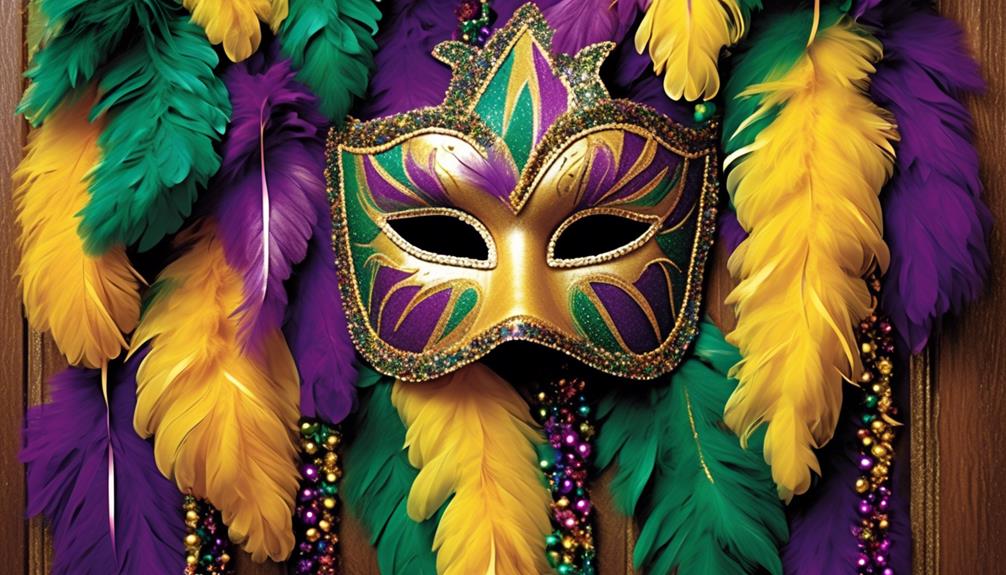
When it comes to decorating for Mardi Gras, we often struggle to find a balance between making a memorable impact and sticking to a budget. The key is to blend boldness and elegance, creating a festive atmosphere that embodies the essence of the holiday without being too overwhelming.
With a few simple yet creative ideas, you can transform any space into a festive Mardi Gras wonderland that will have everyone feeling the festive spirit.
Key Takeaways
- Mardi Gras decorations can include masks, jester hats, bead garlands, feather boas, and glittery table centerpieces.
- Masks can be painted with bold patterns and designs using acrylic paints and glitter.
- Jester hats can be created using colorful cardstock, glitter, bells, and elastic bands.
- Bead garlands can be used to decorate parade floats or create a festive atmosphere, and can also be used to create bead bracelets, necklaces, belts, and headpieces.
Colorful Mardi Gras Masks
Let's get ready to create vibrant and eye-catching Mardi Gras masks that will add a burst of color and excitement to our decorations. Mask painting is a delightful activity that allows us to express our creativity and add a personal touch to the festive ambiance.
To start, gather a variety of plain masks, acrylic paints, paintbrushes, glitter, feathers, and other embellishments. Begin by brainstorming designs and color schemes. Once you have a plan in mind, use the paint to create bold patterns, intricate designs, or even abstract art on the masks. Experiment with different brush strokes and techniques to achieve the desired effect.
Don't forget to let each layer of paint dry before adding new elements to avoid smudging or blending colors unintentionally. As the base design takes shape, explore mask decorating techniques such as adding glitter for a touch of sparkle or attaching feathers to create a dramatic effect.
These masks won't only enhance our decorations but also bring joy to those who see them. Let's share this creative experience with others and spread the vibrant spirit of Mardi Gras!
Festive Bead Garlands
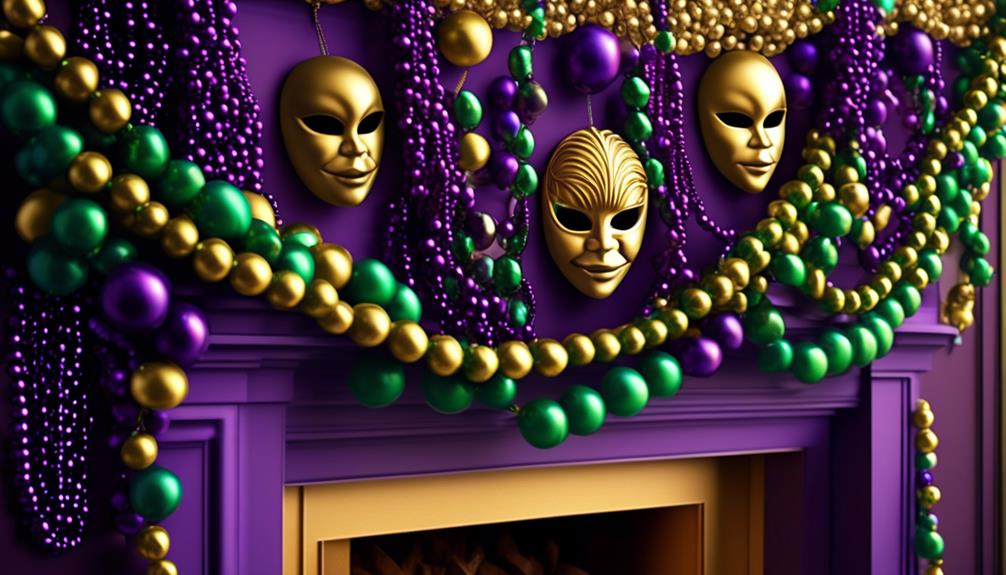
After creating our colorful Mardi Gras masks, we are now ready to dive into the world of festive bead garlands, adding a touch of elegance and flair to our decorations. Bead crafting techniques can elevate the ambiance of any Mardi Gras celebration. To assist you in this endeavor, we've compiled a selection of DIY costume accessories and parade float decorations that will surely delight your guests and spectators.
| Bead Crafting Techniques | Party Favor Ideas | DIY Costume Accessories | Parade Float Decorations |
|---|---|---|---|
| Stringing beads to create stunning garlands | Giving away homemade bead bracelets as party favors | Crafting bead necklaces, belts, and headpieces | Using bead garlands to adorn parade floats and create a festive atmosphere |
Vibrant Feather Boas
Let's talk about the vibrant feather boas!
When it comes to Mardi Gras decorations, feather boas are a must-have.
We'll explore the wide array of feather boa colors, embellishments, and creative hanging ideas to make your Mardi Gras celebration truly unforgettable.
Feather Boa Colors
What are the most vibrant colors available for feather boas to create eye-catching Mardi Gras decorations? When it comes to boa color trends, it's all about bold and lively hues that capture the festive spirit of Mardi Gras.
Here are some vibrant feather boa colors that will make your decorations stand out:
- Emerald Green: This rich and lush shade of green represents the traditional color of Mardi Gras and will instantly bring a touch of elegance to your decor.
- Royal Purple: A deep and regal purple adds a sense of grandeur to your Mardi Gras decorations, symbolizing justice and power.
- Golden Yellow: Bright and radiant, a golden yellow feather boa brings a vibrant burst of energy and joy to your festive arrangements.
These vibrant feather boa colors will elevate your Mardi Gras decorations and create a captivating visual experience for all.
Boa Embellishments
As we explore boa embellishments, we'll incorporate vibrant feather boas, such as emerald green, royal purple, and golden yellow, to infuse our Mardi Gras decorations with elegance and energy.
When creating a boa costume, these feather boas can be draped around hats, sewn onto dresses, or used as sashes for a fun and festive look.
For parade floats, consider using feather boas to adorn the edges, creating a lavish and eye-catching display. To make the most of these boas, intertwine different colors, layer them for a fuller effect, and mix and match textures for added visual appeal.
Additionally, feather boas can be used to create stunning table centerpieces or to embellish masks, adding a touch of glamour to your Mardi Gras celebration.
Boa Hanging Ideas
To create striking boa hanging decorations, select vibrant feather boas in rich colors such as emerald green, royal purple, and golden yellow to infuse your space with the lively spirit of Mardi Gras.
For an eye-catching boa display, consider these hanging arrangements:
- Boa Curtain: Drape long strands of feather boas across doorways or windows to create a dazzling curtain effect, welcoming guests with a festive flair.
- Boa Chandelier: Craft a stunning boa chandelier by suspending multiple boas from a wire frame or hoop, adding a touch of elegance and whimsy to your Mardi Gras festivities.
- Boa Garland: String together colorful feather boas to make a vibrant garland that can be hung along staircases, mantels, or tables, bringing a festive and playful atmosphere to any space.
These hanging arrangements will elevate your Mardi Gras decor and make your celebration truly unforgettable.
Glittery Table Centerpieces
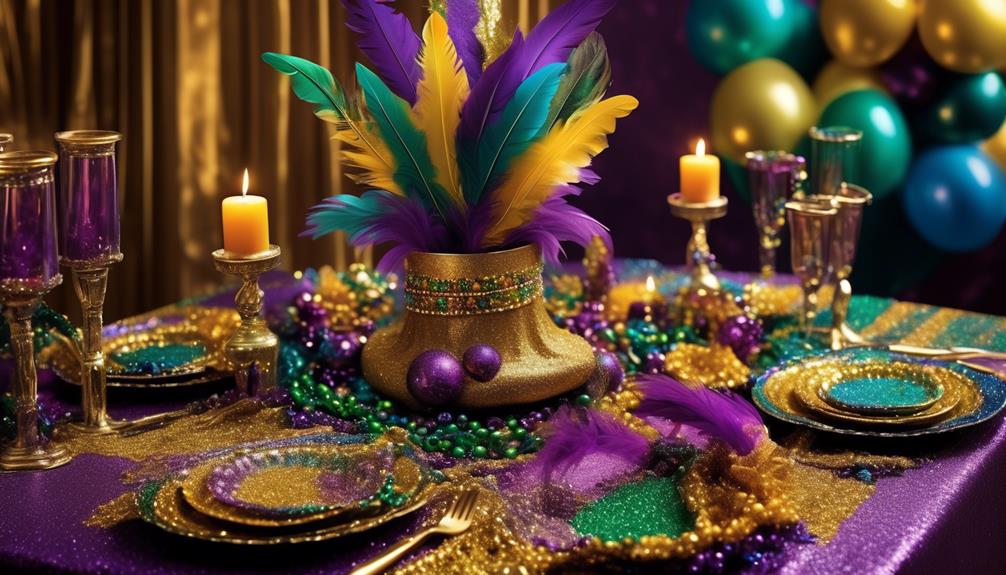
Let's talk about creating stunning glittery table centerpieces for your Mardi Gras celebration.
First, we'll cover the materials needed to bring these dazzling decorations to life.
Then, we'll provide step-by-step assembly instructions to ensure your centerpieces shine bright.
Materials Needed
We can create stunning glittery table centerpieces by gathering clear glass vases, glitter in various colors, mod podge, and paintbrushes for this craft project.
To make these beautiful centerpieces, we can use creative alternatives like recycled glass jars or repurposed wine bottles to serve as the vases. This not only adds a unique touch to the decorations but also provides budget-friendly options.
The glitter in various colors allows for personalization, and the mod podge acts as an adhesive and sealer, ensuring the glitter stays in place.
Paintbrushes are essential for applying the mod podge evenly and precisely onto the vases.
With these materials, we can bring a touch of sparkle and elegance to our Mardi Gras celebration.
Assembly Instructions
Using an assortment of clear glass vases, glitter in various colors, mod podge, and paintbrushes, we can proceed to assemble the glittery table centerpieces for our Mardi Gras celebration.
First, ensure the vases are clean and dry.
Next, apply a coat of mod podge to the outside of the vase using a paintbrush.
Then, sprinkle the glitter onto the mod podge, ensuring it covers the entire surface evenly. For a creative touch, consider mixing different colors of glitter or creating patterns.
Once the glitter is applied, let the vases dry completely.
To prevent the glitter from shedding, seal the glitter with another layer of mod podge.
Allow the vases to dry thoroughly before placing them on the tables.
These centerpieces will surely add a dazzling and festive touch to our Mardi Gras celebration.
Display and Enjoy
With our glittery table centerpieces assembled and dried, we can now showcase them as the sparkling focal point of our Mardi Gras celebration. Here's how to display and enjoy them:
- Place the glittery table centerpieces on the main dining table, ensuring they're evenly spaced to create a stunning visual impact.
- Surround the centerpieces with complementary party supplies such as colorful beads, masks, and feather boas to enhance the festive atmosphere.
- Encourage guests to snap photos with the beautiful DIY crafts and use them as conversation starters, adding an extra touch of charm to the celebration.
Homemade Jester Hats
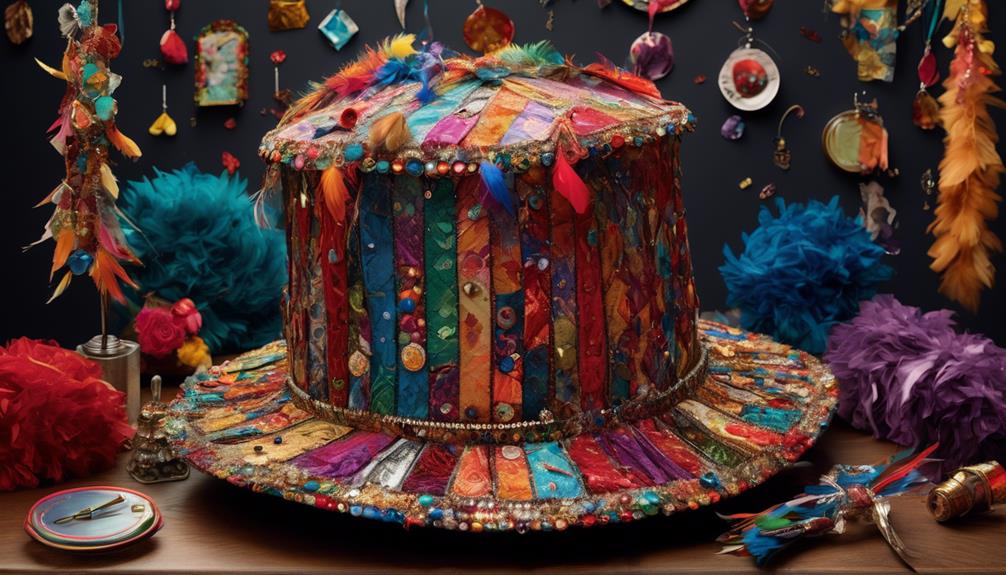
Crafting jester hats at home allows for personalized touches and creativity to shine through, adding a unique and festive flair to your Mardi Gras decorations.
Making DIY costume jester hats can be a fun and rewarding activity for both adults and kids. To start, gather supplies like colorful cardstock, glitter, bells, and elastic bands.
Cut the cardstock into long strips and staple or glue the ends together to form a band that fits around your head. Then, cut out diamond shapes from more cardstock and attach them to the band, alternating colors to create a vibrant, jester-style pattern.
Add glitter and bells for extra pizzazz. For the finishing touch, attach elastic bands to keep the hat in place.
These homemade jester hats can be great additions to your Mardi Gras party favors, and they also provide a delightful activity for guests to engage in during the celebration.
Sparkling Door Wreaths
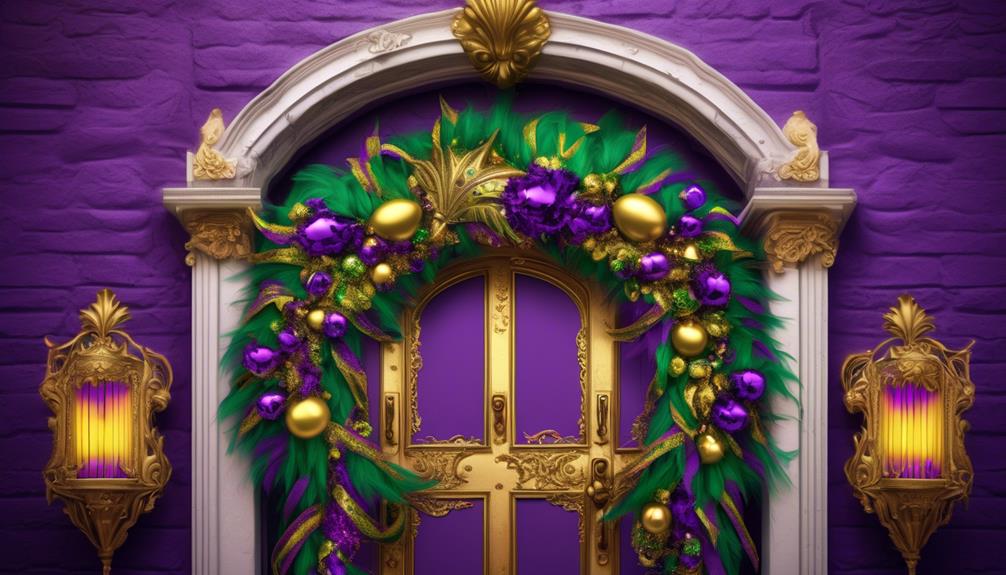
Let's create eye-catching sparkling door wreaths to add a touch of glamour and festivity to your Mardi Gras decor. Making a DIY wreath for Mardi Gras can be a fun and rewarding project. Here are some wreath decorating ideas to help you get started:
- Beaded Elegance: String colorful Mardi Gras beads around a foam or vine wreath base, securing them with hot glue. Add in some shimmering metallic beads for an extra touch of elegance.
- Feathery Flourish: Attach vibrant feathers in green, gold, and purple to the wreath using floral wire or hot glue. Layer the feathers for a lush and extravagant look.
- Glittering Accents: Sprinkle a foam or vine wreath with glitter in Mardi Gras colors. Secure the glitter with a clear sealant spray to prevent it from shedding. Then, add in some glittery Mardi Gras masks, fleur-de-lis ornaments, or decorative picks for a dazzling finish.
Creating your own sparkling door wreaths is a delightful way to showcase your creativity and bring the festive spirit of Mardi Gras to your home.
Masked Balloon Bouquets
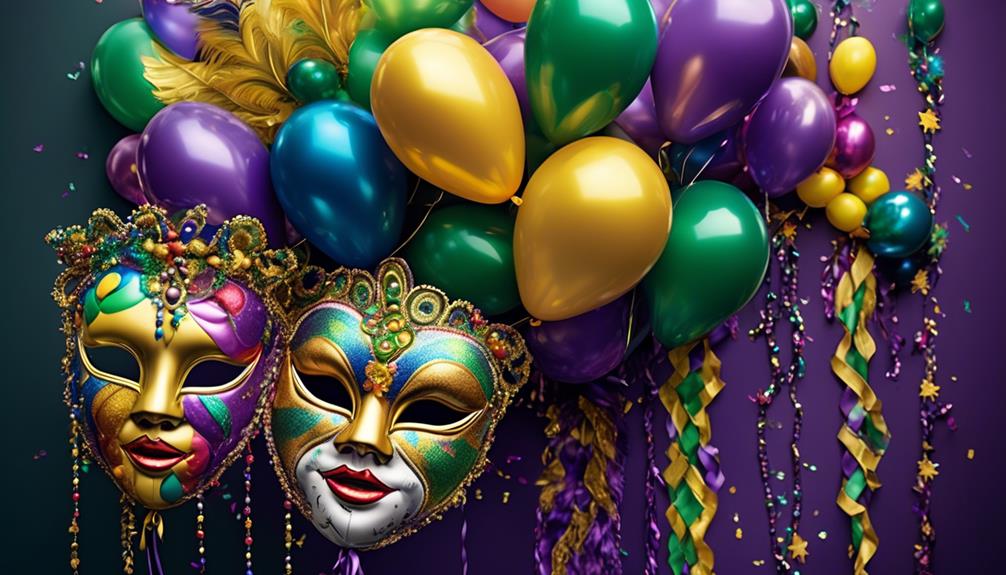
After adorning our doors with sparkling wreaths, we can enhance our Mardi Gras decor by creating vibrant and festive masked balloon bouquets. These balloon sculptures add a touch of whimsy and elegance to any masquerade party.
To craft these stunning bouquets, start by selecting an assortment of Mardi Gras colored balloons, such as purple, green, and gold. Use a variety of sizes to add visual interest. Next, inflate the balloons and tie them off, ensuring they're fully inflated for a beautiful effect.
Once you have your balloons ready, attach them to balloon sticks or lightweight wooden dowels. To create the masked effect, attach elegant masquerade masks to the top of each bouquet. Secure the masks by tying them to the sticks with colorful ribbons that complement the balloon colors. Consider adding glitter or sequins to the masks for an extra festive touch.
Arrange the finished balloon bouquets in strategic locations around your party space, such as near the entrance, the dance floor, or the food table. These vibrant and eye-catching decorations will surely delight your guests and elevate the festive atmosphere of your Mardi Gras celebration.
Jazz-Inspired Wall Decor

Exploring the rhythmic and colorful essence of jazz, we can infuse our Mardi Gras decor with captivating and vibrant wall art inspired by the soulful melodies and spirited energy of this musical genre. Jazz music, with its improvisational nature and rich history, provides a perfect backdrop for artistic inspiration as we create stunning wall decor for our Mardi Gras celebrations.
- Musical Notes Mural: Adorn your walls with a larger-than-life mural depicting swirling musical notes in vibrant Mardi Gras colors. Let the notes dance across the wall, capturing the vivacious spirit of jazz music and adding a dynamic focal point to your decor.
- Vintage Album Cover Display: Showcase vintage jazz album covers in stylish frames, creating a gallery wall that pays homage to the classic artistry of the genre. The striking visuals and evocative designs of these album covers will infuse your space with the timeless allure of jazz.
- DIY Jazz-Inspired Art: Get creative and make your own jazz-inspired art pieces using mixed media, incorporating elements like musical instruments, bold colors, and expressive brushstrokes. These unique creations will bring an authentic and personalized touch to your Mardi Gras wall decor, reflecting the improvisational and eclectic nature of jazz.
Frequently Asked Questions
Where Can I Find Affordable Mardi Gras Decorations?
We usually find affordable Mardi Gras decorations at online retailers and local stores. Online retailers offer a wide variety of Mardi Gras decorations at competitive prices, while local stores may have unique and affordable options.
For budget-friendly options, we often opt for DIY decorations. When seeking budget-friendly options, DIY decorations can be a fun and cost-effective way to add a personal touch to your Mardi Gras decor.
Are There Any Traditional Mardi Gras Symbols That I Should Include in My Decorations?
Traditional symbols like fleur-de-lis, masks, and beads are essential for DIY Mardi Gras decorations. Incorporating these symbols can add an authentic touch to your decor. Look for affordable options at craft stores or online to stay within budget.
Get creative with colors and patterns to make your decorations stand out. These symbols will bring the festive Mardi Gras spirit into your home without breaking the bank.
How Can I Incorporate Mardi Gras Decorations Into My Outdoor Space?
We can incorporate Mardi Gras decorations into our outdoor space by creating DIY Mardi Gras themed crafts. Hanging colorful banners, making festive wreaths, and crafting unique yard signs are great ways to bring the Mardi Gras spirit outside.
We can also use traditional Mardi Gras symbols like fleur-de-lis and masks to add authenticity to our outdoor decor.
What Are Some Creative Ways to Display Mardi Gras Decorations in My Home?
We've found that a creative centerpiece is a great way to showcase Mardi Gras decorations in your home.
You can make a DIY garland using colorful beads, feathers, and masks to really bring the festive spirit to any room.
Can I Make My Own Mardi Gras Decorations Using Items I Already Have at Home?
Absolutely, we can create our own Mardi Gras decorations using household items. DIY decorations aren't only budget-friendly, but they also add a personal touch to our celebrations.
By repurposing items like colorful fabric, beads, and paper, we can craft vibrant and festive décor. From handmade masks to garlands, the possibilities are endless.
Let's get creative and infuse our homes with homemade Mardi Gras spirit!
Conclusion
So, let's get ready to jazz up our Mardi Gras celebrations with these fabulous decorations!
With colorful masks, festive garlands, vibrant feather boas, glittery centerpieces, homemade jester hats, sparkling wreaths, masked balloon bouquets, and jazz-inspired wall decor, our party is sure to be a sight to behold.
Let's bring the spirit of Mardi Gras to life with these dazzling and lively decorations that will transform any space into a festive and vibrant celebration!
- About the Author
- Latest Posts
Introducing Ron, the home decor aficionado at ByRetreat, whose passion for creating beautiful and inviting spaces is at the heart of his work. With his deep knowledge of home decor and his innate sense of style, Ron brings a wealth of expertise and a keen eye for detail to the ByRetreat team.
Ron’s love for home decor goes beyond aesthetics; he understands that our surroundings play a significant role in our overall well-being and productivity. With this in mind, Ron is dedicated to transforming remote workspaces into havens of comfort, functionality, and beauty.
-

 Retreat3 weeks ago
Retreat3 weeks agoIncorporating Biophilic Design in Your Retreat Center
-

 Retreat3 weeks ago
Retreat3 weeks agoDesigning a Retreat Center Kitchen: From Layout to Equipment
-
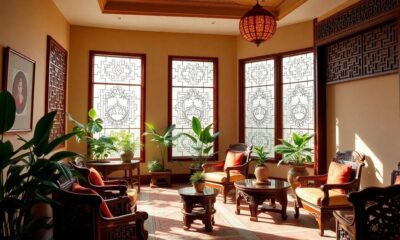
 Southeast Asia Decor4 weeks ago
Southeast Asia Decor4 weeks agoHistorical Feng Shui Color Schemes in Interiors
-

 Retreat3 weeks ago
Retreat3 weeks agoDIY Rustic Decor Ideas for a Cozy Retreat Atmosphere
-

 Southeast Asia Decor4 weeks ago
Southeast Asia Decor4 weeks agoFeng Shui Color Palettes for Your Home
-

 Southeast Asia Decor2 weeks ago
Southeast Asia Decor2 weeks agoUltimate Guide to Harmonious Furniture Placement
-
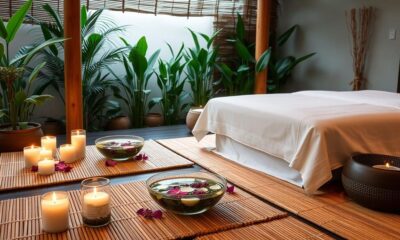
 Retreat4 weeks ago
Retreat4 weeks agoDIY Spa Treatments You Can Offer at Your Retreat Center
-
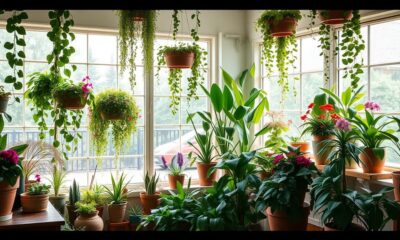
 Retreat4 weeks ago
Retreat4 weeks agoCreating an Indoor Garden for Year-Round Greenery









